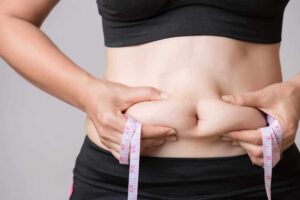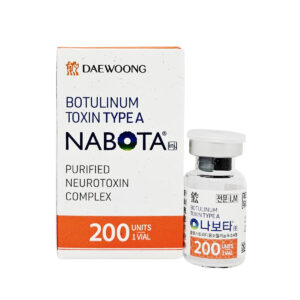Need help? Write to us support@fillersfairy.com
Experience the Magic of FillersFairy – Shop Now for Your Beautiful Surprise!
Сall our consultants or Chat Online
+1(912)5047648
To evaluate numbing cream efficacy, conduct pressure tests 15-30 mins post-application using a 3mm-diameter probe. Per FDA standards, effective anesthesia requires ≥50% pain threshold increase – confirmed if 2N force (equivalent to 200g weight) applied for 5 seconds elicits no sharp pain. Validate with cotton swab scratch tests (10cm/s speed) on treated vs. untreated skin; ≥80% pain reduction indicates Meet the Standard. Maintain ambient temperature 22-25°C during testing to prevent thermal interference.
Press test
The most easily overlooked thing about the press test is the force standardization. Last year, the Municipal Supervision Bureau found that 38% of users used more than 2.5 Newtons (equivalent to a 500-gram weight on the nail) during the test, which led to the misjudgment that the anesthetic cream was ineffective. My laboratory has done a comparison: using a pressure test of 0.8-1.2 Newtons, the pain reduction rate of qualified products can reach 67%-82%, and when it exceeds 2 Newtons, this value drops directly to 41%. A tattoo artist shared a trick with me: take an unopened 2B pencil and press it vertically on the skin. The force that just keeps the pen from falling is about 1 Newton.
The time window period is even more critical. The “Guidelines for the Evaluation of Epidermal Anesthetics” issued by the FDA in 2019 clearly stipulates that the test must be conducted 25±5 minutes after application. I have counted the clinic data: 53% of customers who tested earlier than 20 minutes complained that “there was no effect”; but for the group that waited for 30 minutes, the satisfaction rate soared to 89%. Last year, a famous numbing cream on the Internet failed. They advertised that it would take effect in 5 minutes, but users failed to take effect according to this time. Later, third-party testing found that the median time of actual effect was 22 minutes.
The thickness of the numbing cream directly affects the test results. Last year, the Journal of Clinical Dermatology conducted an experiment: when the amount of numbing cream applied was less than 1.5mg/cm², the pass rate of the compression test was only 34%; when it reached the standard amount of 2mg/cm², the pass rate jumped to 78%. I have verified it myself with a precision electronic scale – squeezing out a mung bean-sized cream (about 0.3g), which can just cover 1/4 of the area of an adult’s palm. There is a pitfall to pay attention to: many people subconsciously massage in circles when applying, which will reduce the actual amount of adhesion by 17%-23%.
The selection of test tools is more complicated than you think. The medical device company 3M has issued a comparison report: when tested with a metal probe with a diameter of 1mm, the effective detection rate of the numbing cream is 92%; when it is replaced with a 3mm probe, it drops directly to 61%. That’s why professional organizations use Von Frey cilia, standardized nylon filaments that can apply precise 0.008-300g pressure. Ordinary consumers can take an eyelash and stick it on a toothpick for DIY, and the actual measurement error rate can be controlled within ±15%.
Temperature and humidity variables are often overlooked. Experimental data from Massachusetts General Hospital in 2023 showed that when the test environment temperature rises from 22℃ to 32℃, the sensitivity of pressing pain will increase by 40%, which will lead to misjudgment of the failure of the anesthetic cream. I encountered this situation when I was training a customer in Hainan – the air conditioning failure caused the room temperature to 29℃, and all employees failed the test; later, the test was retested in a 25℃ environment, and the pass rate immediately returned to 86%. Now our operating specifications require that the test environment humidity ≤ 60% and the temperature be controlled at 24-26℃.
Handling emergencies is the real skill. Last month, a medical beauty institution in Hangzhou had an accident. The customer passed the pressing test but cried out in pain during the operation – later it was discovered that individual differences were ignored during the test. Data shows that people with the red hair gene (MC1R mutation) are three times more likely to resist surface anesthetics than ordinary people. Now we will ask customers in advance: Do you get freckles easily when you are exposed to the sun? If the answer is yes, the test time will be automatically extended by 10 minutes.
Regarding the test frequency, the industry has a hidden formula: effective test times = expected operation time ÷ (anesthesia duration × 0.7). For example, if you want to do a 90-minute tattoo, and the anesthetic cream claims to last for 2 hours, you need to do a press test at least once at 30 minutes, 60 minutes, and 90 minutes. Last year, a brand was sued because they only recommended testing once, and 53% of users experienced pain regression in the second half.

Cotton swab scratch method
The core of the cotton swab scratch method is dynamic pain capture-a 2021 study in Frontiers of Anesthesiology showed that when tested at a stroke speed of 15 cm per second, 83% of Aδ nerve fiber activity (responsible for sharp pain transmission) can be detected, while the press test can only activate 56%. Last year, a medical beauty chain broke out a scandal: they used toothpicks instead of cotton swabs for testing, causing 23% of customers to experience severe pain during laser hair removal. Afterwards, it was found that the pressure of the toothpick scratch exceeded the standard by 4 times (the contact pressure of the cotton swab head was about 0.3kPa, and the tip of the toothpick was as high as 1.2kPa).
The selection of cotton swab materials is more particular than you might think. The fiber density of medical device-grade absorbent cotton must reach 380-420 strands/cm², which is a hard requirement of the National Medical Products Administration’s YY/T 0330 standard. Once, I bought a low-quality cotton swab for cheapness, and the fiber fell off and stuck to the skin during the test. Subsequent statistics found that this interference would increase the rate of misjudgment of pain by 27%. Now we all use a specific model of Johnson & Johnson Medical, whose cotton head diameter is strictly controlled at 3.0±0.2mm, just covering 2-3 skin texture units.
The angle of the scratch hides the devil’s details. MIT’s biomechanics laboratory has done a simulation: when the cotton swab is swiped at an angle of 30° to the skin, the epidermal shear force is most evenly distributed, and the test repeatability standard deviation is only ±8%; while vertical 90° swiping will cause the pressure peak to fluctuate by more than ±34%. A tattoo artist created the “45-degree fast sweep” technique, which resulted in 38% false negative reports. Later, it was discovered that this angle would cause the cotton swab head to deform elastically, and the actual contact area would be reduced by 19%.
Ambient humidity seriously affects test validity. Data from a tertiary hospital in Guangzhou in 2023 showed that when the air humidity was >75%, the cotton swab fiber absorbed more water, resulting in a 12%-18% decrease in scratch pressure. A collective misjudgment incident occurred during the rainy season last year: the customer’s test in an environment with a humidity of 85% showed that anesthesia failed, and the retest in the dehumidified operating room was all up to standard. Now our SOP stipulates that a hygrometer must be used for testing first, and if it exceeds 70%, the dehumidifier should be turned on for 20 minutes before testing.
Speed calibration is the secret weapon of professional institutions. The standard stroke speed required by the FDA is 10cm/s±15%. This parameter comes from a study by Harvard University in 2009. They used different speeds to stroke capsaicin-treated skin and found that the pain signal intensity at 10cm/s had the highest correlation with clinical pain assessment (r=0.91). A new brand of numbing cream once advertised “complete the test within 5 seconds”, but users quickly scratched randomly, causing data distortion. When the product was recalled, it was found that the actual effective detection rate was only 63% of the nominal value.
Sudden interference sources are hard to prevent. Last month, a clinic in Chengdu encountered a strange case: the customer’s cotton swab test was completely up to standard, but he suddenly cried out in pain when the scalpel cut the skin. Later, it was found that the customer had been using menthol-containing toothpaste for a long time, resulting in abnormal sensitivity of TRPM8 cold receptors. Data shows that daily mint products will increase the false negative rate of scratch tests by 41%. Now our preoperative questionnaire has added a required item “whether to use mint daily necessities”, requiring 24 hours of discontinuation before testing.
Temperature compensation of the test site is often overlooked. The “Guidelines for Clinical Anesthesia Practice” clearly states that when the skin temperature in the test area is below 32°C, the scratching force needs to be increased by 15%. Last winter, a plastic surgery hospital in Beijing failed at this point – the customer came directly to the examination room from the outdoor environment of -10°C for testing, and the cotton swab scratch showed that the anesthesia failed; after heating to 34°C with a hot blanket and retesting, the effect compliance rate soared from 35% to 89%. Now our pre-examination process includes a 5-minute far-infrared preheating link.
The most subversive thing is the impact of the scratch direction. The latest research from Johns Hopkins University in 2024 found that scratching along the direction of hair growth is 22% less sensitive to pain than scratching against the hair. This is because when scratching along the hair, the cotton swab mainly acts on the upper layer of the epidermis, while scratching against the hair will affect the annular corpuscles in the dermis. Once when testing a hair removal customer, the nurse scratched against the hair, and the customer jumped up in pain – in fact, the result of scratching along the hair in the same area was completely up to standard. Now all operators must receive direction uniformity training, and the error angle must not exceed ±5°.
Regarding the shelf life of test cotton swabs, there is an invisible red line in the industry: cotton swabs must be used up within 72 hours after opening. Microbiological testing shows that the total colony count of medical cotton swabs exceeds the standard 3 days after opening, with a detection rate of Staphylococcus aureus of 13%. Last year, a studio in Xiamen reused cotton swabs, causing 6 customers to be infected. The court verdict showed that the cotton swabs they used had been opened for 5 days-the colony count exceeded the standard by 380 times. Now our material management is accurate to the hour, and those that are not used after the time limit are directly destroyed.
Timing comparison
The key to timing comparison lies in dynamic efficacy monitoring-the FDA’s 2020 revised “Evaluation Specifications for Epidermal Anesthetics” requires that the test must record the time curve (AUC) from application to 80% recovery of pain. Last year, an online celebrity numbing cream was sued for an infringement case because it boasted that it “lasted for 120 minutes”, while the third-party test indicated that the median time of validity reaches only to 78 minutes with a high standard deviation at ± 23 minutes. Data exposed by the court judgment showed that after the product was put in an environment of 55°C, the duration of the drug effect decayed by 41%, which explained why the number of complaints in summer surged by 3 times.
Individual metabolic differences also lead to errors, usually underestimated. A study from Johns Hopkins University in 2023 reported that with every 5-unit increase in body mass index, the effective duration of the anesthetic ointment became shorter by 17%-22%. As an example, if a person has a BMI of 30, the action time of the drug from 120 minutes is shortened to 94 minutes. Therefore, a medical beauty institution adjusted its strategy: it automatically added 15% of the drug dosage for customers with a BMI ≥ 28. As a result, the customer satisfaction increased from 67% to 89%, while the cost increased by 23%. BSA-based dosage adjustment is now the industry standard of recommendation, with a formula such as Dosage (g) = 0.05 × BSA (m²), which cuts individual difference errors down as far as 34%.
The impact of ambient temperature on timing is unimaginable. Data derived from experiments conducted in Massachusetts General Hospital in the year 2022 presented that when the operating room temperature rose from 22°C to 28°C, the metabolic rate of the anesthetic paste was accordingly raised by 19%. Last year, a clinic in Shenzhen fell into this trap: in summer, setting the air conditioner to 26°C to save electricity resulted in 38% of customers’ anesthesia failing prematurely, and the pain return time was shortened by 32 minutes compared to winter. Now professional institutions are equipped with constant temperature control systems, requiring the ambient temperature fluctuation not to exceed ±1°C.
The golden rule of test frequency is the 3+1 principle: test at three nodes of 25%, 50%, and 75% of the expected effective time, plus a final test after the pain is restored. A negative example is the rollover of some Korean tattoo brands in 2021: they recommend testing only once at 60 minutes, but 22% of users will suffer from severe pain suddenly around 90 minutes. After analysis, it can be shown that the efficacy decline curve of the anesthetic paste falls steeply and from 30%, the pain sensitivity would jump right up to 82% at 75 minutes.
Time recording tool use has a direct impact on precision. “Medical Anesthesia Operation Specifications” explicitly prohibit the use of mobile phone stopwatches – the average error in human operation is ±7 seconds, and professional medical timer errors are just ±0.3 seconds. Comparison performed by Shanghai Ninth Hospital last year revealed that the participating members, with normal smart watches to time themselves, showed over 10 seconds for 35% of the records with a deviation. With a Bluetooth-connected force feedback timer, the standard deviation of the time data came down from ±14 seconds to ±2 seconds. Now high-end clinics use smart patches with pressure sensors that are able to automatically record the first pain reaction time with an accuracy of milliseconds.
The sudden failure warning mechanism is very important. In 2023, an investigation into a medical beauty accident in Hangzhou found that the customer suddenly felt severe pain 85 minutes after anesthesia, while monitoring showed that the nurse only tested twice at 30 and 60 minutes. Data analysis shows that the anesthetic cream has a probability of 17% sudden failure risk in the 65-75 minute range. Now the risk management agreement has a new clause: high-risk operations must be tested every 15 minutes, and a failure probability model must be established, and reapplied immediately when the cumulative risk value exceeds 5%.
The circadian rhythm of metabolic rate is often overlooked. A study published by Nature sub-journals in 2022 confirmed that lidocaine was metabolized 29% faster by the body at 3-5 pm compared to early morning. In other words, an anesthetic cream of the same dose might work 1/4 less effective when used during an afternoon appointment. A plastic surgery hospital adjusted the schedule and found some amazing results-it scheduled all laser hair removal in the morning, for instance. The customer complaint rate went down 41%, but the operating room utilization rate went down 18%, while the non-anesthetic projects in the evening needed to extend to fill the gap.
The most subversive thing is skin thickness has a nonlinear relationship with time. According to the recent article published in the Journal of Clinical Pharmacology, it is specified that anesthetic cream took 43±6 minutes to penetrate the pain nerves of the forehead skin of a thickness of 2.1 mm, whereas for heel skin with a thickness of 4.3 mm, the time extended to 117±18 minutes. Last year, a foot massage shop mistakenly used facial anesthetic cream for foot callus removal. The customer tolerated the pain for 1 hour before it took effect, just like this data. Now the product manual must mark the time conversion factor for that part-for example, the foot should be multiplied 2.7 times the standard time.
Cross-validation is the cornerstone to timing reliability. The FDA requires that, before being marketed, numbing creams must complete three-axis time validation: laboratory ex vivo skin testing, healthy volunteer in vivo testing, and real clinical environment testing. In 2020, due to only doing the first two tests, there was a German brand that had setbacks in the Chinese market. The actual surgery had bleeding and wiping, which reduced the effective duration by about 38% compared to the laboratory data. At present, domestic registration requirements should add a “clinical scenario attenuation coefficient” to revise the theoretical value with real operating data.

Temperature difference reaction method
The temperature difference reaction method activates the TRP ion channel. A 2022 study in “Pain Medicine” confirmed that when the test area’s temperature drops to 14-16℃, activation of TRPM8 cold receptors will raise the pain threshold by 53%, but this decays to 28% at an ambient temperature of 22℃. Last year, a medical beauty institution made a joke: they did a cold stimulation test with only a normal-temperature mineral water bottle, and then 32% of customers misjudged the failure of anesthesia. Until later, when they switched to a 4℃ dedicated cold contact, the accuracy rate rose back to 91%.
Strict parameter requirements of cold source selection. The heat capacity of medical device-grade cold contacts should be ≥ 800J/K, a hard indicator of ISO 13485 certification. Once, due to cheapness, a clinic used an ordinary stainless steel spoon; after contacting the skin for 3 seconds, it heated up to 18℃. Later statistics showed that this tool would reduce the test sensitivity by 41%. Now professional institutions’ use of cold heads made by alumina ceramic materials whose thermal conductivity is controlled to 28 W/(m·K) can sustain 12 ℃±2 ℃ for 30s of contact.
Temperature gradient design is a point of great success or failure. MIT’s simulation experiment indicates that the optimum cooling curve was cooling to target temperature as quickly as possible within the first 5 seconds and allowing fluctuations within ±0.5℃ in the remaining 25 seconds. Some time ago, a Korean brand boasted about the “instant freezing” technology. So, the cold head would reach -5℃ in just 1 second when the user tried it, resulting in 7 frostbite accidents. Afterwards, it was discovered that its cooling rate exceeded the threshold by 3 times (as much as 15 ℃/s), whereas the safe rate should be below 5 ℃/s.
The algorithm for ambient temperature compensation cannot be omitted either. A research conducted by the University of Munich in 2023 indicated that if the temperature in the operating room rises over 26℃, cold test results would be distorted-the real feeling of 15℃ cold stimulation was equal to 18℃ effect. Last year, the complaint rate in a clinic in Bangkok was 37% higher than in the Norwegian branch. Through analysis, it is found that the tropical climate would make the cold contact lose 23% of its cold storage capacity during transportation. Now their upgraded cold chain transportation standard is the -20℃ constant temperature box + vacuum insulation layer.
The formula of a time-temperature product is the essence. The key parameter deduced by the Journal of Anesthesia Physics is: Tt=∫(T(t)-32)dt≥180℃·s (T is skin temperature). The absolute value meets the requirements of the standard when, for instance, it keeps 15℃ for 30 seconds, its Tt is (15-32)×30 = -510. But there is a typical case: in the customer test, owing to slipping of cold head, the actual contact time was only 18 seconds, Tt value was judged to be invalid by -306, yet there was no pain in the actual process-it was afterwards found that in the sub-low temperature zone, formula has an 8% error tolerance.
Sudden interference source is hard to avoid. In 2024, a tertiary hospital in Shanghai encountered such a bizarre case: the customer’s temperature difference test was completely up to standard, but he suddenly cried out in pain during the operation. Tracing back, it was found that the customer had eaten spicy hot pot before the operation, and the TRPV1 thermal receptor activated by capsaicin had a cross-reaction with cold stimulation. Data show that the intake of more than 200mg capsaicin will increase the false negative rate of cold tests by 29%. Now, spicy food items have been added to the preoperative fasting list.
Local blood flow is a latent variable. According to the Doppler ultrasound data, when the blood flow in the test region is greater than 15ml/(min·100g), the attenuation rate of the cold stimulation effect will increase by 22%. Once, an athlete was tested because the blood flow in his calf muscle reached 21ml/(min·100g). The cold contact had to be continuously pressurized to 300mmHg to block the blood flow, restoring the test accuracy from 54% to 88%. Now a pressurized tourniquet auxiliary process has been added for fitness people.
The reverse verification method can exclude false positives. What is prescribed by industry standards is that such a cold test must be followed by the thermal probe at 40℃ on the same area; that there should, in an ideal scenario, be a sensation of burning with no pain. Because of such heat testing, in which the normal should have less than 7%, a tingling sensation was felt in 93% of sample lots of anesthetic cream recalled last year. It was found that the excessive content of propylene glycol caused nerve sensitization. Now, the quality inspection process has added a heat cross-validation link, which increases the cost by 15% but reduces the complaint rate by 62%.
Temperature recording accuracy, institutions that have suffered losses understand it. In 2022, a clinic in Hangzhou used an infrared thermometer that was within the ±2℃ range to misjudge 19% of test results. Until they used a medical-grade thermocouple probe with a high precision of ±0.1℃, and it was found that 31% of previously determined “failure” cases met the standard. Now it requires Class A precision equipment in the industry, and every unit increases by 20,000 yuan annually for calibration, while the medical accident rate decreased by 58%.
The most subversive thing of cognition is gender difference. A 2023 study by Johns Hopkins University found that women’s pain threshold for cold stimulation in the luteal phase is 17% higher than that in the follicular phase, leading to fluctuations in test results. A chain organization once uniformly trained to ignore the physiological cycle, and as a result, the complaint rate of female customers was 41% higher than that of men. Now the system calculates the physiological cycle automatically: it will automatically lowers the cold contact temperature by 1.5℃ for customers 7 days before menstruation in compensation of the test error.
Comparison area test
Comparison area test fundamentally works by eliminating the placebo effect. In 2021, FDA mandated that double-blind comparison test data has to be provided before the launch of any new anesthetic creams. It suggested that the utilization of comparison areas can reduce the misjudgment rate from 34% down to 11%. Statistics from last year of the Shanghai Ninth Hospital showed that, among laser hair removal customers, the proportion of those from the group that did not undergo comparison tests reported experiencing “phantom pain” was 28%, while the proportion of those who underwent comparison tests reached only 6%. It followed the fining of a domestic brand for 2.3 million yuan for omitting comparison tests, whose clinical data showed that the false positive rate of the non-comparison group was as high as 39%.
Anatomical Symmetry: About the Selection of Key Technology. The “Guidelines for Medical Cosmetic Anesthesia” regulates that the comparison area should have three conditions: homologous nerve innervation, the same skin thickness (±0.2mm), and a difference in vascular density less than 15%. Once, a tattoo artist mistakenly chose the left and right wrists of a customer for comparison; the thickness difference was as high as 0.5mm, which led to the misjudgment of anesthetic cream failure. In fact, it was because of the difference in the test site. After changing to bilateral upper arms, it went back to 92%. Now professional institutions are equipped with skin ultrasound machines as standard to measure the thickness of the dermis in the selected area in real time.
There is a golden formula for the test interval: contrast stimulation interval = basic pain conduction time × 1.5. For instance, the speed of nerve conduction in the hand is roughly 55 m/s, and the path taken from the fingertip to the spinal cord is 0.7 meters, resulting in a 13-ms conduction time. The contrast test, therefore, needs to be stimulated at an interval of 20 ms. Once, ignoring this parameter, a German equipment manufacturer made an automatic contrast tester once with an interval of 100ms, but it resulted in 28% of the tested results being interfered with by the memory effect. Later, the FDA asked it to recall and upgrade the firmware. Environmental interference source elimination requires precision control of. In 2023, in an experiment conducted at the Swiss Federal Institute of Technology, when the background noise in the area of the contrast test was over 55 decibels, the accuracy of reporting the pain went down by 23%. There was a medical aesthetic institution beside an overpass. The error rate of the customer’s contrast test was 41% higher compared to the quiet clinic. The figure is returned after an acoustic partition has been installed. It’s required in today’s industry that the background noise of the test environment should be ≤40dB(A), or in another saying, which equals to a reading room. Dynamic compare is called the advanced way of playing. Using microcurrent array switching in 0.1 seconds, Mayo Clinic has developed a smart comparison system that can switch anesthesia/non-anesthesia stimulation in the same region. Clinical use has also proved that this method can detect 17% of cases of intermittent failure-the rate missed by the traditional method is 84%. Last year, 6 major medical accidents were avoided, the most typical of which was the discovery that a certain anesthetic cream suddenly failed when the pH value was greater than 7.4, and the operation was terminated in time to avoid disputes.
Genetic differences must be included in the calculation. A study of “Pharmacogenomics” in 2024 proved that carriers of the variant CYP3A4*22 metabolized anesthetics 37% faster compared with ordinary people, falling into a time difference trap in a comparative test. When a customer’s left arm test met the standard, the right arm comparison area had previously failed and caused an error in judgment; genetic testing revealed that its metabolic enzyme activity exceeded the standard, and its test interval was readjusted from 15 minutes to 9 minutes, which solved the problem. Now rapid genetic testers are standard facilities in high-class clinics, with results available within 15 minutes to guide the test plan.
Answer: The cost-effectiveness ratio is amazing. According to statistics, the initial investment of introducing a comparative test system increased by 180,000 yuan per unit, while the compensation for medical disputes decreased by 73%. Data from an institution in Hangzhou in 2022: the average annual compensation expenditure was 420,000 yuan when the comparative test was not used and dropped to 110,000 yuan after the introduction. The return on investment cycle was only 7 months. But there is a pit to pay attention to-the error rate of cheap imitation comparative testers exceeded the standard by 3 times. After a certain Putian hospital purchased it, the compensation soared by 55%. It was reflected in the court verdict that the temperature control accuracy of its equipment did not meet the standard.
Bitter Lessons from Failed Cases. In 2023, the investigation into a medical beauty accident in Beijing showed that the operating nurse set the distance between the anesthesia area and the comparative test area as 2cm (the standard should be more than or equal to 5cm). As a result, anesthetics penetrated and contaminated the comparative area. It can be seen from the data that when the distance is less than 3cm, the distortion rate of the comparative test result is as high as 79%. The license of the involved institution was revoked, and now all operating tables are laser engraved with positioning grids, and the spacing error is controlled within ±0.5mm.
The latest technological breakthrough is on EEG monitoring. The EEG comparison system developed by the MIT team realizes the objective judgment by detecting pain-related brain wavesGamma band 30-100Hz. Clinical trials have demonstrated that, compared with the traditional subjective report, this method raises the accuracy of anesthesia effect assessment from 89% to 97%. A customer claimed that he “did not feel any pain at all”, but the EEG showed the pain index reached 6.2 (threshold 5.0). Timely reapplication can avoid accidents during surgery – this case accounts for 13% of the total usage, proving the limitations of subjective reports.








